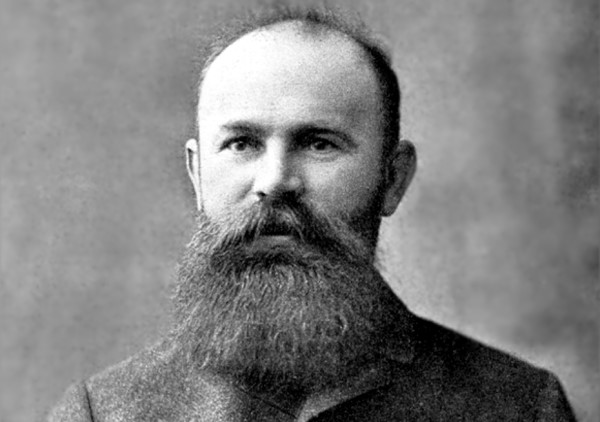Thanks to him, we learned about the formation of the Bosphorus: Who is Nikolai Ivanovich Andrusov?
He studied the formation of the Bosporus and Dardanelles straits

(1861-1924) USSR geology and paleontology scholar. He studied the stratigraphy of the Black Sea Hazer basin and the Balkan Peninsula, and the formation of the Bosporus and Dardanelles straits. He was born in Odessa. He taught at Yurgevsky University from 1896 to 1904 and at Kyiv University from then until 1912. He was elected a member of the Russian Academy of Sciences in 1914. He died in Odessa.
Nicolai Ivanovich Andrusov (19 December 1861 – 27 April 1924) was a Russian Empire born geologist, stratigrapher, and paleontologist.
Andrusov participated in seabed explorations in the Black Sea and Marmara in 1890 and studied stratification in the Çavda region of Gallipoli. Based on the structure and slope of the layers in his research on Rye, which he collected in his work Die Schichten von Cap Tschauda (1890), IV. He claimed that at the beginning of the time, there was a hollow basin oriented towards Marmara in the place of today's Dardanelles Strait. He later matured this view in Kritische Bemerkun-gen über die Entstehungshypothesen der Bosphorus und der Dardanellen (1900), a critical review of the assumptions about the formation of the Bosphorus and Dardanelles straits. According to Andrusov, both straits connecting the Black Sea to the Mediterranean, IV. It was formed by the flooding of the valleys of two separate streams pouring into the Marmara, which is a lake at the time.
During the research in the Black Sea, III. with the end of time IV. Examining marine sediments and fossils dated to the time, Andrusov found Hazer-type remains on the seabed. He explained the evolution and extinction of species, especially neogene (end of time) mollusks, based on Darwin's theory. For example, their fossils III. He attributed the evolution of the Dreissensidae family, one of the wastewater mollusks found from time immemorial to the availability of physical and geographical conditions, and its extinction to the radical change in ecological conditions. Andrusov was awarded the Lomonosov prize of the Russian Academy of Sciences in 1897 for his work Iskopayemiye i jivushchiye Dreissensidae Yevrazii, in which he compiled the results of this research.
In addition to Andrusov's studies in the field of paleontology, stratigraphy (stratigraphy) studies, which provide the first reliable information on the structure, composition, and quality of the third layer sediments in the Black Sea-Hazer region and in the southeast of Europe, have not lost their importance until today. As a matter of fact, the detailed stratigraphy of the third layer sediments in the Caucasus, where the oil deposits are located, was prepared in line with Andrusov's studies, and Andrusov's theoretical studies on oil formation contributed greatly to the search for oil deposits.
Works of Nicolai Ivanovich Andrusov
Die Schichten von Cap Tschauda, 1890, (“Layers of Nose of Rye“);
Südrussiche Neogenablage-rungen, 1897, (“Third Time Sediments in Southern Russia“);
Iskopayemiye i jivushchiye Dreissensidae Yevrazii, 1897;
Kritische Bemerkungen über die Entstehungsbypothesen des Bosphorus und der Dardanellen, 1900, (“Critical Commentary on the Formation Hypotheses of the Straits of Istanbul and Dardanelles“).
